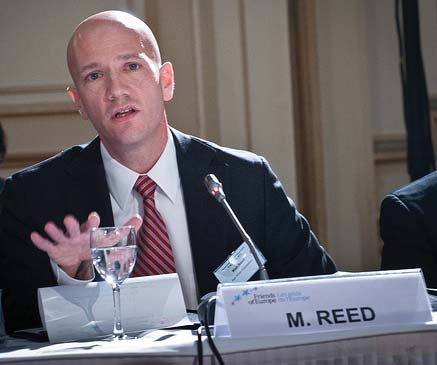Running a foundation is more challenging than running a business. Meeting global philanthropist The Aga Khan’s long-term vision with strong execution excellence standards is even more demanding. Yet, Matt Reed, once an academic, says he is excited because of the social impact he can make. Excerpts of his chat with Benedict Paramanand on the sidelines of the 2015 Jaipur Literature Festival
Foundations need to be managed very well if they are to succeed… The fi rst thing to understand about our foundation in India is that we are an operating foundation, not a grant making foundation like many others. Lots of people assume that we only give money. In fact, we implement programs on our own. What we do is we conceptualize, design and implement programs in education, health, water, sanitation, rural development, among others. So it means that management and implementation are a big part of what we have to do.
And you have a corpus for that?
Roughly between 10-20% of our budget in any year comes from His Highness The Aga Khan and the rest comes from other partners. The partners are other grant-making foundations, corporate, and several bilateral donors. We have received funding from the European Commission, the UK government, and USAID, among others. That’s essentially how we are funded.
How old is it in India?
In India, the Foundation has been incorporated since 1978. There are other The Aga Khan Development agencies, 10 agencies working worldwide – some that are also in India. Some of these have been in India for 100 years. The fi rst school in Gujarat was established a hundred years ago.There are now several The Aga Khan Schools running in Gujarat, Maharashtra and Telengana. They were originally started as parochial schools for the Ismaili community but for at least 40 years they have been opened to everyone.
We are currently working in seven states. When I came in a year and half go, my job, just like a CEO in a company, was to do a stakeholder analysis, understand who and what are important for our organization. His Highness The Aga Khan gave us the goal to think 25 years ahead.
For him, by the way, that’s a midterm view. That gives you a sense of what he is thinking. What is it that you want to achieve; you want to do, look as an institution. In the development sector a lot of organizations manage from project to project. But our time frames are from 25-35 years. This forces you to think like an institution.
What’s the kind of impact you have already made?
In Gujarat, for example, we have been working with a number of communities in coastal areas who, 20 years ago, were suffering from drought. Water tables were depleting, not enough rain, no drinking water, it was a massive problem. We helped these villages restore the water table through conservation and resource management, constructing over a thousand check dams, improving over 40,000 hectares of land, and doubling crop output in several thousand villages (8000 villages). In forest conservation, we’ve helped communities plant 12 million trees and protect 11,000 hectares of land.
Right now we are present in 7 states and we work with 3.8 million people and over 400 schools. In my organization the ultimate stakeholder has been the person in the village. Does that person get value from what we do and has that changed his/her life? We facilitate community organizations around all of these things.
Sometimes, we work with the organization, get the top spinning and then we step away. We offer them technical assistance, sometimes funding from another partner.
How is it working with The Aga Khan?
What His Highness really wants to know from us is – are we making a difference in the quality of life of the people we touch? He wants data and stories. We are an extension of his commitment to humanity. …He has been doing social entrepreneurship for 50 years. The Network has both for-profi t and not-for-profi t side. That’s unique because most foundations are only grant-oriented.
What made you choose to be a CEO here? What’s your driving inspiration?
I started out as an academic. I wanted to do less thinking about the world and more action because I wanted to make a difference. I still think about strategies, of course, but spend much more of my time thinking about how we can get it done. What motivated me was the opportunity to make a difference and to lead an organization that is distinctive and has that mission at its core. I also benefi ted from a lot of institutions that supported me. I just felt I wanted to give back; wanted to make a difference and this is an opportunity to do that. It is very rewarding.
What makes me successful? Well, I am an enthusiastic person but basically I know how to get things done. I am analytical; I am able to look at the big picture, strategize and can handle complexities.
What’s your target for next 5 years?
I want to double if not triple the size of the foundation; triple the amount of work that we are doing. I feel we have much more potential: the quality is good but we could be doing much much more. I also want to create more meaningful partnerships with Indian corporates. Right now it’s a great time to be in India because the landscape for fi nancing development is totally changing in India. It’s more advanced here than it is anywhere else in the world.










